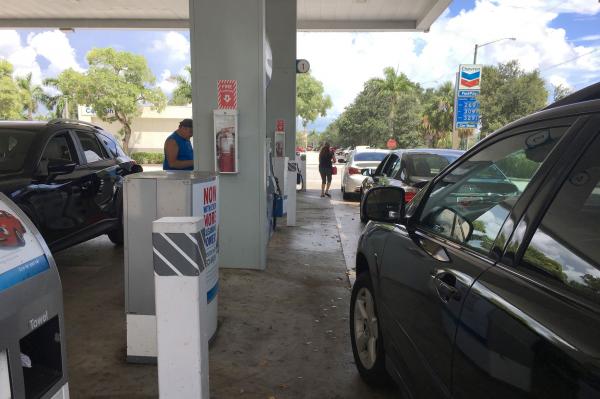It’s unclear which direction consumer gasoline prices are headed as U.S. markets approach the next major holiday test for the summer. File Photo by Gary I Rothstein/UPI | License Photo
If gas prices follow last week’s major spike in crude oil prices, expect pain at the pump. Or OPEC saves the day, depending on who you ask.
June 26 (UPI) — With the price of oil moving erratically, perceptions over the direction for consumer fuel prices in the United States were mixed ahead of a major holiday.
July 4, Independence Day, is the next federal holiday in the United States and falling on a Wednesday could lead to long weekends and busy travel calendars. With about a week to go, motor club AAA reported a national average retail price of $2.85 for a gallon of regular unleaded gasoline on Tuesday, about 4 percent less than one month ago.
Crude oil prices, which serve as a peg for consumer gasoline prices, have moved from 4 percent losses on fears of a global trade war to similar spikesafter market disappointment with the latest sign of more oil from the Organization of Petroleum Exporting Countries.
OPEC last week decided to ease back on voluntary production cuts, but not by enough to offset the expected market deficit in the second half of the year. Even after major gains last week, the price for Brent crude oil, the global benchmark for the price of oil, is below its yearly high of around $80 per barrel.
Brent was priced at around $75 per barrel early Tuesday. Jeanette Casselano, a spokeswoman for AAA, said the OPEC decision will likely pay off in the long term.
“The OPEC production increase will help to offset concerns of shrinking global supply caused by high global demand this year,” she said in a statement.
Patrick DeHaan, the lead petroleum analyst at GasBuddy, said he’s concerned the Friday rally could continue ahead of the July 4 holiday and lead to higher gas prices.
“I’m optimistic that we can avoid a $3 per gallon national average,” he said in a separate statement. “But if gas prices were to mirror the gains in oil prices, a 5 percent gain would theoretically put us back at nearly $2.99 per gallon, not what you like to see any time, much less prior to the summer’s most popular holiday.”
By region, the West Coast is the most expensive market in the country. Arizona has the cheapest gas in the region at $3.05 per gallon, though prices as a whole are inching lower. Gasoline inventories in that region fell slightly, but are higher than they were this time last year.
The Great Lakes market is the most volatile in the country, with Michigan near the top of the list with a 13 cent per gallon, or 4.2 percent, decline from last week. Inventory levels in that market are now the third highest in the country.
The national average price for a gallon of gas on this date last year was $2.26.

